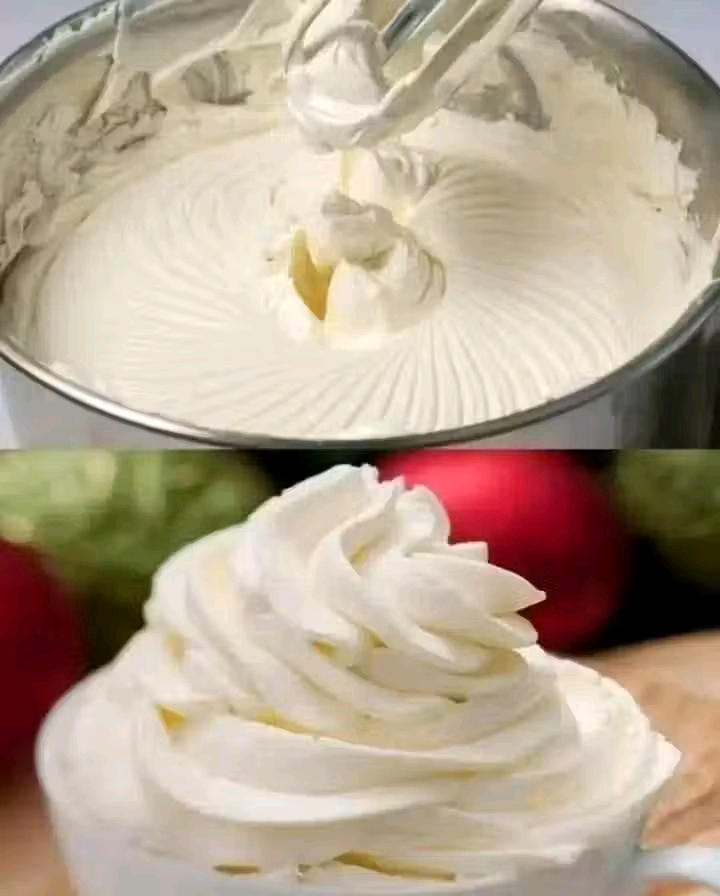Sure! Here’s a BIG, detailed pastry cream recipe post, including everything you asked for — from history and method to lovers and conclusion! This would be perfect for posting in a group, blog, or social media. You can edit it down if needed.
🌟 The Secret of Pastry Cream (Crème Pâtissière) 🌟
“A silky delight that whispers French elegance into every bite.”
📜 Introduction
Pastry cream — known in French as crème pâtissière — is the soul of many classic desserts. Rich, smooth, and versatile, it’s the golden custard found inside éclairs, fruit tarts, cream puffs, mille-feuilles, and more. Whether you’re a home baker or a pastry lover, mastering this cream is like unlocking the secret code to countless desserts. Let’s take a deep dive into this luxurious creation.
🏺 A Brief History
Crème pâtissière was developed in France during the 17th century, with origins tracing back to royal kitchens. It was refined by French chefs like Marie-Antoine Carême, a legendary name in pastry history. Over the centuries, it has become a cornerstone of French pâtisserie, with variations found across Europe and beyond.
🧡 Who Loves It?
Pastry cream is adored by:
- 🎂 Bakers, who use it as a base for cakes and tarts
- 🍓 Fruit lovers, who adore it in tart shells with berries
- 🍫 Chocolate fans, who mix it with ganache for choco-pastry cream
- 💞 Romantics, who remember the éclairs from their first Paris visit
- 👨🍳 Professional chefs, who transform it into mousseline or diplomat cream
🛒 Ingredients
This version is rich, velvety, and not overly sweet.
- 1 liter (4 cups) of whole milk
- 5 tablespoons cornstarch (or 60g flour for a classic version)
- 4 egg yolks
- 2 whole eggs
- 150g (3/4 cup) sugar
- 1 tbsp vanilla extract or 1 vanilla bean
- 30g (2 tbsp) unsalted butter (optional, for extra richness)
🧑🍳 Instructions & Method
Step 1: Heat the Milk
- Pour the milk into a saucepan.
- If using a vanilla bean, split it, scrape the seeds, and add both seeds and pod to the milk.
- Bring it gently to a simmer. Then remove from heat and let steep for 10 minutes. Remove vanilla pod afterward.
Step 2: Whisk the Eggs
- In a separate bowl, whisk together the egg yolks, whole eggs, sugar, and cornstarch until pale and fluffy.
Step 3: Temper the Mixture
- Slowly pour half the warm milk into the egg mixture while whisking constantly. This prevents scrambling.
- Return the mixture to the saucepan with the remaining milk.
Step 4: Cook the Cream
- Cook over medium heat, stirring constantly with a whisk or spatula.
- It will thicken after 2–4 minutes. Once it reaches pudding-like consistency and bubbles gently, it’s ready.
Step 5: Finish & Cool
- Remove from heat. Stir in butter and vanilla extract (if using extract instead of a bean).
- Pour into a bowl, cover with plastic wrap directly on the surface (to prevent skin forming), and cool.
- Refrigerate until chilled and set (about 2 hours).
💡 Tips for Success
- Strain the cream for extra smoothness.
- Don’t skip tempering — it avoids curdled eggs!
- Use a whisk, not a spoon — it blends better.
❤️ Formation and Variations
Once you’ve made the base pastry cream, you can upgrade it to:
- Diplomat Cream: Fold in whipped cream = lighter, airy texture.
- Mousseline Cream: Beat in butter for a rich cake-filling cream.
- Chocolate Crème: Add melted dark chocolate while still warm.
- Coffee or Lemon Variants: Infuse milk with espresso or citrus zest.
🥐 Conclusion
This isn’t just a recipe — it’s a gateway to baking elegance. Pastry cream teaches patience, precision, and pleasure. It’s one of those kitchen creations that feels like a warm hug or a love letter from France. Master it, and you’re never far from a dessert that dazzles.
💬 Comment “PASTRY LOVE” to stay in the group and get more hidden recipes!
🧁 Next up: Chocolate Eclairs with This Cream 👇
📥 Full printable PDF in First Comment
Let me know if you want this post turned into a shareable image, video, or short text for WhatsApp/Facebook groups!
